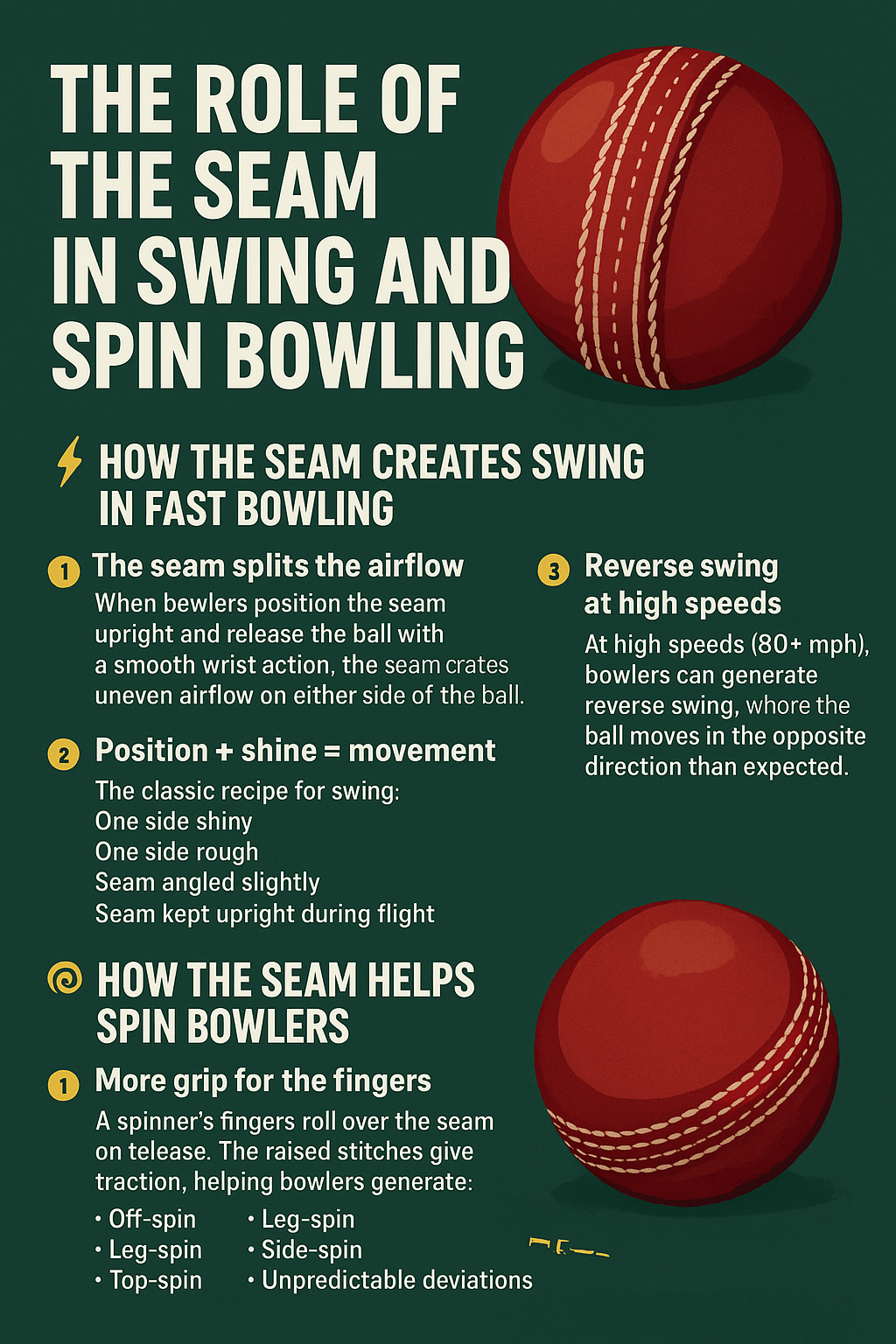If you’re new to cricket or watching the sport grow across the United States, one part of the cricket ball deserves special attention: the seam.
It’s that raised, stitched ridge circling the ball — and believe it or not, this tiny feature plays a massive role in how bowlers dominate a match.
Whether you're a pace bowler looking for extra movement or a spinner trying to grip the ball better, the seam is your best friend. Here’s how it works.
How the Seam Creates Swing in Fast Bowling
Swing bowling is all about making the ball move sideways in the air. And the seam is the key.
1. The seam splits the airflow
When bowlers position the seam upright and release the ball with a smooth wrist action, the seam creates uneven airflow on either side of the ball.
This imbalance leads to swing — either away from or into the batter.
2. Position + shine = movement
The classic recipe for swing:
-
One side shiny
-
One side rough
-
Seam angled slightly
-
Seam kept upright during flight
With these ingredients, bowlers can produce:
-
Out-swing: moves away from the batter
-
In-swing: curls back in sharply
In American terms, think of it like a baseball pitcher throwing a breaking ball — only here, the seam guides the air.
3. Reverse swing at high speeds
When the ball gets older and rougher, the seam continues to affect airflow, but in a different way.
At high speeds (80+ mph), bowlers can generate reverse swing, where the ball moves in the opposite direction than expected.
It’s unpredictable, dramatic, and a total game-changer.
How the Seam Helps Spin Bowlers
Spin bowling is slower, but relies heavily on rotation and grip — and again, the seam becomes the star.
1. More grip for the fingers
A spinner’s fingers roll over the seam on release.
The raised stitches give traction, helping bowlers generate:
-
Off-spin: breaks into the batter
-
Leg-spin: breaks away
-
Top-spin: bounces higher
-
Side-spin: sharp turn off the pitch
Without the seam, these variations wouldn’t have the same sharp bite.
2. Seam helps the ball “bite” the pitch
When the spinning ball lands seam-first, it grips the surface.
This causes dramatic changes like:
-
Extra turn
-
Lower skid
-
Sudden bounce
-
Unpredictable deviations
In other words, the seam acts as a pivot point, making the ball behave differently on every landing.
Why the Seam Matters to Every Bowler
Regardless of style, bowlers rely on the seam to gain an advantage:
-
Fast bowlers use the seam to shape swing in the air.
-
Spinners use it for grip and to control turn on the pitch.
-
Seam bowlers (medium pace) use the upright seam to make the ball nibble sideways after bouncing.
Good seam presentation isn’t just skill — it’s a weapon.
Final Thoughts
In cricket, the seam is more than stitching.
It's the science behind swing.
It’s the secret to spin.
And it’s the difference between a routine delivery and a match-winning ball.
As cricket continues to grow across the USA, understanding the seam helps fans appreciate the artistry and strategy behind every delivery.
Whether you’re coaching, playing, or watching your first match, keep an eye on the seam — it tells you everything.
